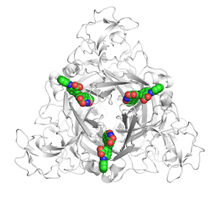Newly Discovered Protein Inhibits the Formation of the Precursor to Alzheimer's Plaques
Unexpected Discovery Made by Swedish Researchers within the Field of Alzheimer
Advertisement
As of today, there is no cure or effective treatment of Alzheimer's disease. Swedish researchers have now through their discoveries opened up new possible strategies for potential treatment of the actual cause of the disease. These results have been obtained through a fruitful collaboration between researchers from Sahlgrenska Academy at University of Gothenburg, Royal Institute of Technology (Kungliga Tekniska Högskolan, KTH) and the company Affibody AB.
The researchers have for the first time shown how a newly developed Affibody® molecule, with specific binding affinity for the Alzheimer's amyloid-ß peptide, can stabilize and encapsulate the ß-peptide. In Alzheimer's disease, toxic aggregates of the amyloid-ß peptide assemble in the brain as fibrils and eventually plaques. The discovery gives insights on how the toxic aggregates are formed and how this process might be inhibited. These results are now published in Proceedings of the National Academy of Sciences of the USA.
A research group at Sahlgrenska Academy at University of Gothenburg, headed by Professor Torleif Härd has determined the three-dimensional structure of the amyloid-peptide, by the use of the Affibody® molecule that can specifically capture the ß-peptide. Furthermore, it has been shown that the Affibody® molecule stabilizes the ß-peptide and inhibits the ß-peptide from forming the toxic aggregates known as a precursor of Alzheimer's disease.
The study provides not only the first high-resolution 3D structure of the amyloid-ß peptide bound to an aggregation-preventing agent, i.e. the Affibody® molecule, but also demonstrates how the Affibody protein embraces the peptide and thereby buries large parts of it within a tunnel-like structure. "While other molecules that interact with the amyloid-ß peptide typically also bind to the peptide aggregates, the Affibody® protein specifically binds non-aggregated, single amyloid-ß peptide molecules", explains senior author Professor Torleif Härd. Importantly the mode of interaction explains why full inhibition of aggregation is achieved.
Original publication: Wolfgang Hoyer, Caroline Grönwall, Andreas Jonsson, Stefan Ståhl, and Torleif Härd; "Stabilization of a ß-hairpin in monomeric Alzheimer's amyloid-ß peptide inhibits amyloid formation"; Proceedings of the National Academy of Sciences of the United States of America 2008.
















































